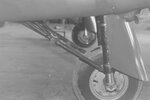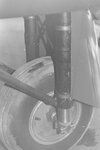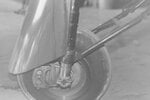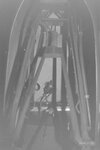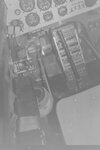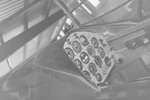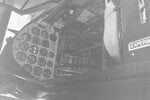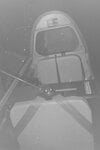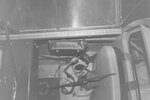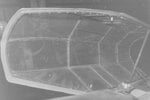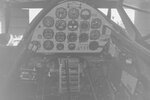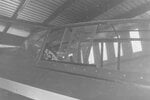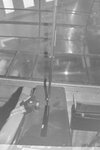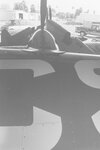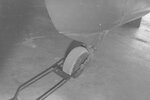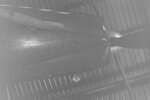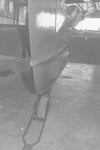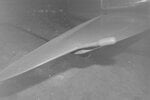Navigation
Install the app
How to install the app on iOS
Follow along with the video below to see how to install our site as a web app on your home screen.
Note: This feature may not be available in some browsers.
More options
You are using an out of date browser. It may not display this or other websites correctly.
You should upgrade or use an alternative browser.
You should upgrade or use an alternative browser.
De Havilland "Comet
- Thread starter johnbr
- Start date
Ad: This forum contains affiliate links to products on Amazon and eBay. More information in Terms and rules
More options
Who Replied?Skyediamonds
Staff Sergeant
- 1,266
- May 26, 2018
Very interesting!! It looks like a modeler's dream of much-needed information & data. If this means anything, I was very fortunate to be able to photograph a full-sized replica of DeHavilland DH-88 "Grovsner House (not sure of the spelling as I'm writing this from memory) in extensive detail. This full-sized replica is (was?) airworthy at that time. It was created by (late) Bill Turner of Repeat Aircraft based out of FlaBob Airport in Riverside, California. If interested, I'll be glad to post some of them here. They're all in b+w as digital photographer was non-existent at the time.
Good stuff!
Skyediamonds
Staff Sergeant
- 1,266
- May 26, 2018
Have to visit my storage facility for those b+w negatives, convert them into digital, then create a file. From there, I'll post some good details of the DH-88.
- Thread starter
- #6
johnbr
2nd Lieutenant
net

Skyediamonds
Staff Sergeant
- 1,266
- May 26, 2018
Okay gentlemen:
I'd like to start off with this sole colored picture of the full-sized DH-88 replica. The three men in the pictures are from left to right: the (late) Bill Turner, he's the creator of the DH-88 and many other full sized racing aircraft. His company was called "Repeat Aircraft." He always had a cigar and a good laugh. Very nice gentleman and very well-qualified to fly all types of aircraft. The next gentleman in the middle is me. That's a very young Gary you see here that was taken about 35 years ago. I've age a bit since then. The last gentleman on the far right is (late) Ed Maloney. He's the founder and president of Planes of Fame air museum located in Chino, CA. A fantastic gentleman and a true friend. Ed is very "down to earth" and easily approachable and ready for a quick chat any time, any where. I was truly blessed to have the honor of knowing these two outstanding gentlemen.

I'd like to start off with this sole colored picture of the full-sized DH-88 replica. The three men in the pictures are from left to right: the (late) Bill Turner, he's the creator of the DH-88 and many other full sized racing aircraft. His company was called "Repeat Aircraft." He always had a cigar and a good laugh. Very nice gentleman and very well-qualified to fly all types of aircraft. The next gentleman in the middle is me. That's a very young Gary you see here that was taken about 35 years ago. I've age a bit since then. The last gentleman on the far right is (late) Ed Maloney. He's the founder and president of Planes of Fame air museum located in Chino, CA. A fantastic gentleman and a true friend. Ed is very "down to earth" and easily approachable and ready for a quick chat any time, any where. I was truly blessed to have the honor of knowing these two outstanding gentlemen.
Skyediamonds
Staff Sergeant
- 1,266
- May 26, 2018
For the next series of b+w photos, I'll be the first to admit that they're not the best in terms of overall quality. I believe that over 35 years have probably taken their toil on the negatives. That being said, I have approximately 85 photos of this plane. I won't post all, but I'll be glad to hear from anyone who wishes for me to post a particular part of the plane to help satisfy their curiosity. I thought I'd start with the landing gear and go from there. I'm sure many of our fellow members would like to see the cockpit interiors and I will be glad to post them as well. However, I'd like to remind everyone that this is a replica and it's also airworthy. To be airworthy meant many changes had to be made to accommodate the latest safety measures needed and also to be in compliance with the FAA regulations.
Bill Turner said that the plane handles very nicely in flight. The controls are all harmonious and well balanced. The Gypsy engines are extremely reliable and easy to manage. The extreme nose makes it very difficult to land or takeoff. The plane is also somewhat temperamental on the landing roll out or during the takeoff.
To wit: For some reason, I just picked out the right main landing gear. It was just a random thought and went with it. The third photo clearly shows an inside view of the right main landing gear and the disc brake. This is just one of many modern requirements needed to make this plane airworthy. The last photo, I thought everyone might get a good bang out of it is: a shot of the wheel well looking straight up. I placed the camera on the floor and set off the timer. The wheel is on the bottom of this picture.
Bill Turner said that the plane handles very nicely in flight. The controls are all harmonious and well balanced. The Gypsy engines are extremely reliable and easy to manage. The extreme nose makes it very difficult to land or takeoff. The plane is also somewhat temperamental on the landing roll out or during the takeoff.
To wit: For some reason, I just picked out the right main landing gear. It was just a random thought and went with it. The third photo clearly shows an inside view of the right main landing gear and the disc brake. This is just one of many modern requirements needed to make this plane airworthy. The last photo, I thought everyone might get a good bang out of it is: a shot of the wheel well looking straight up. I placed the camera on the floor and set off the timer. The wheel is on the bottom of this picture.
Attachments
Skyediamonds
Staff Sergeant
- 1,266
- May 26, 2018
I thought perhaps everyone would be interested in seeing the "front office" first. Along with that, the throttle controls which are located on the left side. I do have a squared-on shot of the main instrument panel, but for some reason, it skipped out of my transfer to file. I can reboot it if anyone's is interested. I purposely posted the last photo showing the rear seat and bulkhead to illustrate that the comfort level of the two pilots were not a serious consideration. So it stands to reason why they were so tired and fatigued from flying.
Attachments
Skyediamonds
Staff Sergeant
- 1,266
- May 26, 2018
I thought I would post a few more shots of the interior and especially focus on the canopy itself. The second picture # 55 clearly shows the method of construction and how it's hinged. This is the front portion looking towards the rear.
I'm glad that I found the squared-on shot of the main instrument panel. At least we know the shape of the panel in relation to the original.
Finally, I thought I would post this shot of the canopy in closed position, but note the sliding side window. I knew Bill Turner well enough that he would want to make this plane as accurate as possible and I'm sure that this feature is also on the original as well.
Last picture of this post shows the hinge point in the middle between the two seats. It's designed to fold over itself as the canopy is closed.
I'm glad that I found the squared-on shot of the main instrument panel. At least we know the shape of the panel in relation to the original.
Finally, I thought I would post this shot of the canopy in closed position, but note the sliding side window. I knew Bill Turner well enough that he would want to make this plane as accurate as possible and I'm sure that this feature is also on the original as well.
Last picture of this post shows the hinge point in the middle between the two seats. It's designed to fold over itself as the canopy is closed.
Attachments
Skyediamonds
Staff Sergeant
- 1,266
- May 26, 2018
Finally, I'd like to offer some unusual perspectives of the DH-88 from different angles that people would normally not see or even notice. As I've mentioned at the beginning, if anyone is interested in more pictures of a particular part of the plane or from a different angle, please let me know and I'll be happy to oblige.
The first picture shows the rear of the right engine nacelle as seen from the trailing edge of the wing. I thought it was very interesting to see how the nacelle was featured.
The next picture shows something most people don't really pay too much attention: The tail wheel.
Now, here's a picture I'm convinced very few people will see. This is an underside photo of the right engine taken straight up from the floor.
The tail area. I thought this picture was worth posting from the standpoint of how the vertical tail itself has the airfoil section feathered into the surface to help smooth the transition from the elevators.
Finally, the mass balances to the elevator. There were mass balances on all of the controls.
The first picture shows the rear of the right engine nacelle as seen from the trailing edge of the wing. I thought it was very interesting to see how the nacelle was featured.
The next picture shows something most people don't really pay too much attention: The tail wheel.
Now, here's a picture I'm convinced very few people will see. This is an underside photo of the right engine taken straight up from the floor.
The tail area. I thought this picture was worth posting from the standpoint of how the vertical tail itself has the airfoil section feathered into the surface to help smooth the transition from the elevators.
Finally, the mass balances to the elevator. There were mass balances on all of the controls.
Attachments
Skyediamonds
Staff Sergeant
- 1,266
- May 26, 2018
Thank you Wurger, sir. Your approval is greatly appreciated.
Good stuff!
Skyediamonds
Staff Sergeant
- 1,266
- May 26, 2018
Thank you Gnomey. Much appreciated
- Thread starter
- #18
johnbr
2nd Lieutenant
de Havilland DH88 Comet Racer – de Havilland Aircraft Museum
Aircraft overview:
De Havilland designed and built the DH88 Comet Racer in nine months as a response to a chance in winning an air race proposed by Sir MacPherson Robertson in October of 1934. The winner would get £10,000 in prize money if they were the first to fly from England to Australia. The purpose of the race was to celebrate the centenary of the foundation of the State of Victoria. Three Comet Racers were ordered to take part in the race; G-ACSR, G-ACSP and G-ACSS. G-ACSP was painted black and gold and named 'Black Magic'.


Aircraft specifications:
Power Unit: 2 x 230 hp (172 kW) de Havilland Gipsy 6 R engines
Wing Span: 44 ft (13.4 m)
Height: 10 ft (3 m)
Length: 29 ft (8.8 m)
Loaded Weight: 5,500 lb (2,495 kg)
Max speed: 237 mph (381 kph)
Service Ceiling: 19,000 ft (5,791 m)
Range: 2,925 miles (4,707 km)
Aircraft overview:
De Havilland designed and built the DH88 Comet Racer in nine months as a response to a chance in winning an air race proposed by Sir MacPherson Robertson in October of 1934. The winner would get £10,000 in prize money if they were the first to fly from England to Australia. The purpose of the race was to celebrate the centenary of the foundation of the State of Victoria. Three Comet Racers were ordered to take part in the race; G-ACSR, G-ACSP and G-ACSS. G-ACSP was painted black and gold and named 'Black Magic'.
Aircraft specifications:
Power Unit: 2 x 230 hp (172 kW) de Havilland Gipsy 6 R engines
Wing Span: 44 ft (13.4 m)
Height: 10 ft (3 m)
Length: 29 ft (8.8 m)
Loaded Weight: 5,500 lb (2,495 kg)
Max speed: 237 mph (381 kph)
Service Ceiling: 19,000 ft (5,791 m)
Range: 2,925 miles (4,707 km)
- Thread starter
- #19
johnbr
2nd Lieutenant
- Thread starter
- #20
johnbr
2nd Lieutenant
Last edited:
Users who are viewing this thread
Total: 1 (members: 0, guests: 1)

